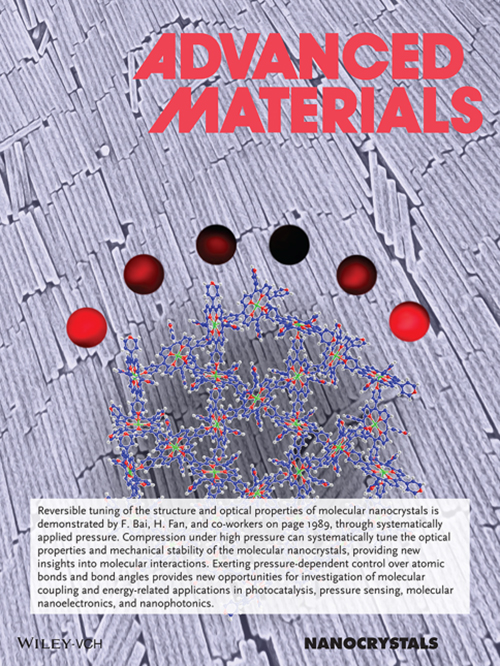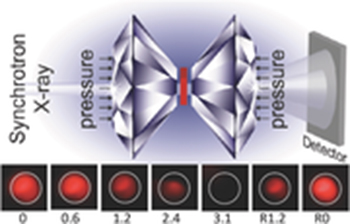X-RAY RUNS: Apply for Beamtime
2017 Nov 1 - Dec 21
2018 Feb 7 - Apr 3
2018 Proposal/BTR deadline: 12/1/17
2018 Apr 11 - Jun 4
2018 Proposal/BTR deadline: 2/1/18
Development of a useful sensor with typical application in harsh environments is highly demanded. Pressure processing provides an easy and quick way to make the early discovery of sensor materials with newly manifested properties. Taking advantage of several synchrotron-based techniques developed at CHESS, one research team, led by Dr. Hongyou Fan at Sandia National Laboratory in USA and Dr. Feng Bai at Henan University in China, combined a joint force and developed one molecular nanocrystal sensor, which can perceptively feel external force and thus emit bright and distinct light.

To develop a good sensor with exceptional sensibility and easy detection, it is expected to find one target material that exhibits a dramatic change of material property while only a slight environmental variation occurs. Keeping this in mind, the research team worked hard and ultimately fabricated the one-dimensional molecular nanocrystals — zinc tetra-pyridyl porphyrin nanowires. This optically active chromophore nanowire emits the typical and strong red light. Upon compression of these nanowires in a transparent diamond anvil cell (DAC), synchrotron X-ray scattering measurements revealed the large pressure-induced lattice shrinkage, whereas the laser spectroscopic monitoring simultaneously uncovered a red shift of the emitting light. These changes were associated by a noticeable color change, which is not only reversible upon entire release of pressure, but can be also directly observed by human eyes. Such pressure-dependent sharp changes make porphyrin nanowires an excellent sensor for direct sensing of the harsh environmental change.

This research and development (R&D) work was conducted in part at the B1 station of the Cornell High Energy Synchrotron Source (CHESS). The team includes researchers at Sandia National Laboratory, the University of New Mexico and Cornell University in USA, and Henan University in China. Both the National Science Foundation (NSF) and the Department of Energy (DOE) financially supported this work.
Submitted by: Zhongwu Wang, CHESS, Cornell University
05/04/2016
